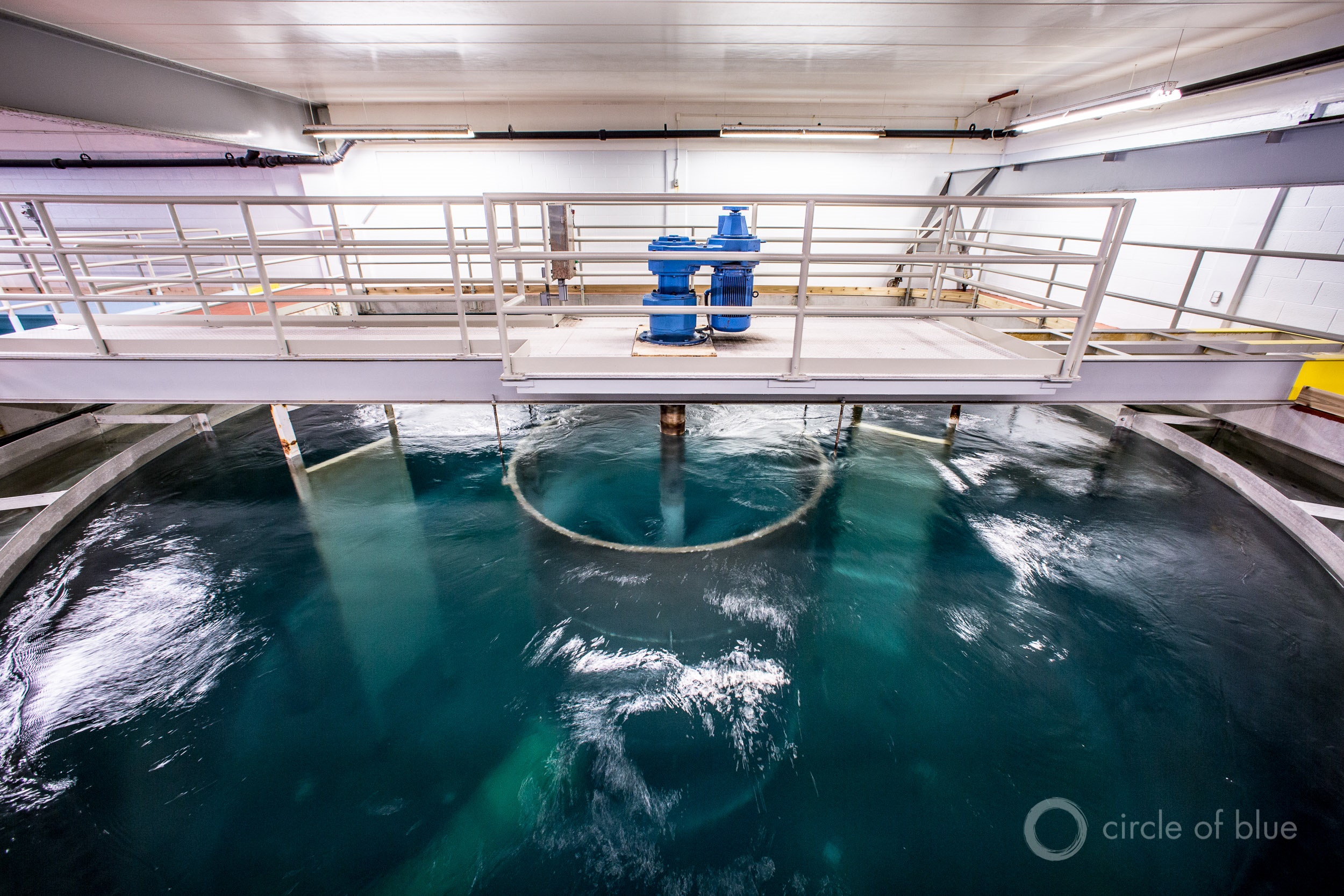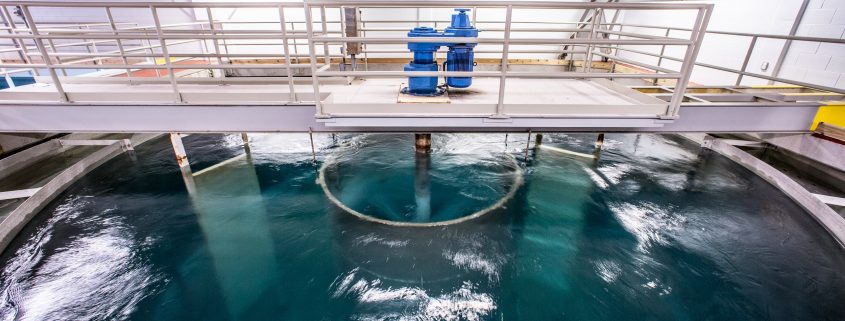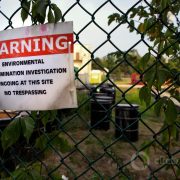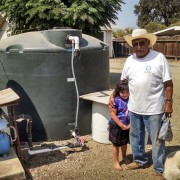U.S. Water Utilities Not Prepared for Catastrophe
Federal government should have more active role in preparing for natural disaster and cyberattack, report argues.

U.S. water utilities need more investment, partnerships, and planning to be able to ensure water service after a natural disaster or cyberattack. Photo © J. Carl Ganter / Circle of Blue
By Brett Walton, Circle of Blue
Cutting beneath the lower Mississippi River, the New Madrid fault is a T-shaped geological hazard that is primed for a fierce tremor. A magnitude 7.7 earthquake where the fault crosses the Missouri-Tennessee border would be devastating, snapping water distribution pipes and toppling power lines in seven states, as far as 200 miles from the epicenter. About 1.1 million homes would be without water and 2.6 million without electricity, for days, weeks or perhaps months. The shaking would weaken levees and dams, rupture sewage pipes, and isolate communities.
Such a “black sky” event — infrequent but debilitating — would be beyond the capacity of current emergency response, according to a National Infrastructure Advisory Council report on the U.S. water sector’s resilience to natural disaster and cyberattack.
A New Madrid earthquake is one of five disaster scenarios analyzed in the council’s 212-page report to the Department of Homeland Security. The council will meet in Los Angeles on Friday to finalize the recommendations.
The report argues that the federal government ought to take a more prominent role in assessing risks and coordinating emergency response because the water sector is divided into many thousands of agencies across state and county jurisdictions and because water service is a prerequisite for a community’s quick recovery. The report claims that “cascading failures” – a loss of power, for instance, that leads to a loss of water service that results in a hospital running short of water – are not well understood and ought to be the subject of more analysis and planning. Above all, water utilities need money to invest in repairs, a game plan for delivering water to hospitals and other critical facilities after a disaster, and a more complete understanding of the risks.
Diverse Utilities But Common Risks
After previous reports on the electric power and transportation sectors, the council was tasked with assessing the ability of the nation’s water delivery systems to withstand disaster and mend quickly. Council members interviewed more than 70 experts at water utilities, trade groups, universities, private companies, and government agencies. They did not consider questions about supply or pollution.
Though U.S. water utilities are diverse in their technical capacity and financial resources, the council found three common risks.
First, many water system pipes and facilities have reached or exceeded retirement age and need to be upgraded. It is an oft-repeated assessment, but the report notes that everyday failures — the water main breaks and sewage leaks that are a near-daily occurrence in some cities — do not inspire confidence that the systems will survive more exacting pressures during a natural disaster.
“Simply put, we have failed to make reinvestment in our infrastructure a top national priority,” the report states. “The condition of our infrastructure seriously lags behind in an increasingly competitive global economy, but we have been unable to generate the overall public interest, support, and political will to reinvigorate it.”
Second is the risk of cyberattack, which the council argues “is no longer hypothetical.” A dam in New York was hacked in September 2013 by Iranian computer experts, and chemical levels at an unnamed treatment plant were manipulated. Virtual intruders could shut down water service, tamper with dam gates, or destroy equipment. As more of the industrial control systems that operate pump stations and valves are connected to the internet, water utility employees need new skills, training, information, and computer savvy.
Climate change is the third common threat. Storms are increasingly severe, with bigger tidal surges and greater risk of flooding. Hurricane Sandy, which pummeled the mid-Atlantic coast in 2012, gave officials a glimpse of the future. The storm caused overflows at 10 of 14 New York City sewage plants and damage to nearly half the city’s pump stations. Repairs to a plant operated by the Passaic Valley Sewerage Commission, in New Jersey, cost $US 200 million – four times the commission’s annual operating budget.
List of Challenges Grows Longer
Water utilities have a number of hurdles to overcome on the path to resilience. The sector is notoriously splintered. There are some 52,000 community water systems in the United States, and four out of five serve fewer than 3,300 people. Small systems have neither the technical skills to fend off a cyberattack nor the financial capacity of larger utilities. The report recommends that the federal government provide them with more training and aid while facilitating partnerships with well-staffed utilities that have more resources. This sort of planning is taking place in California and, having learned from Sandy, in the New York metro area.
Unlike energy or transportation, there is no single federal agency focused on water. Groups such as the Government Coordinating Council, comprising state and federal representatives, and the Water Sector Coordinating Council, an industry body, already assist utilities. But the Federal Emergency Management Agency’s disaster response divides water responsibilities across four units, which impedes information sharing and splits authority, according to the report.
The water sector is also, in a way, a victim of its own success. Its services, largely buried beneath city streets or concealed in nondescript buildings, are undervalued by the public, the report claims. So far, the sector has posted a “remarkable track record” of maintaining service during disaster. As the risks intensify, more diligence and preparation will be needed.
Brett writes about agriculture, energy, infrastructure, and the politics and economics of water in the United States. He also writes the Federal Water Tap, Circle of Blue’s weekly digest of U.S. government water news. He is the winner of two Society of Environmental Journalists reporting awards, one of the top honors in American environmental journalism: first place for explanatory reporting for a series on septic system pollution in the United States(2016) and third place for beat reporting in a small market (2014). He received the Sierra Club’s Distinguished Service Award in 2018. Brett lives in Seattle, where he hikes the mountains and bakes pies. Contact Brett Walton










